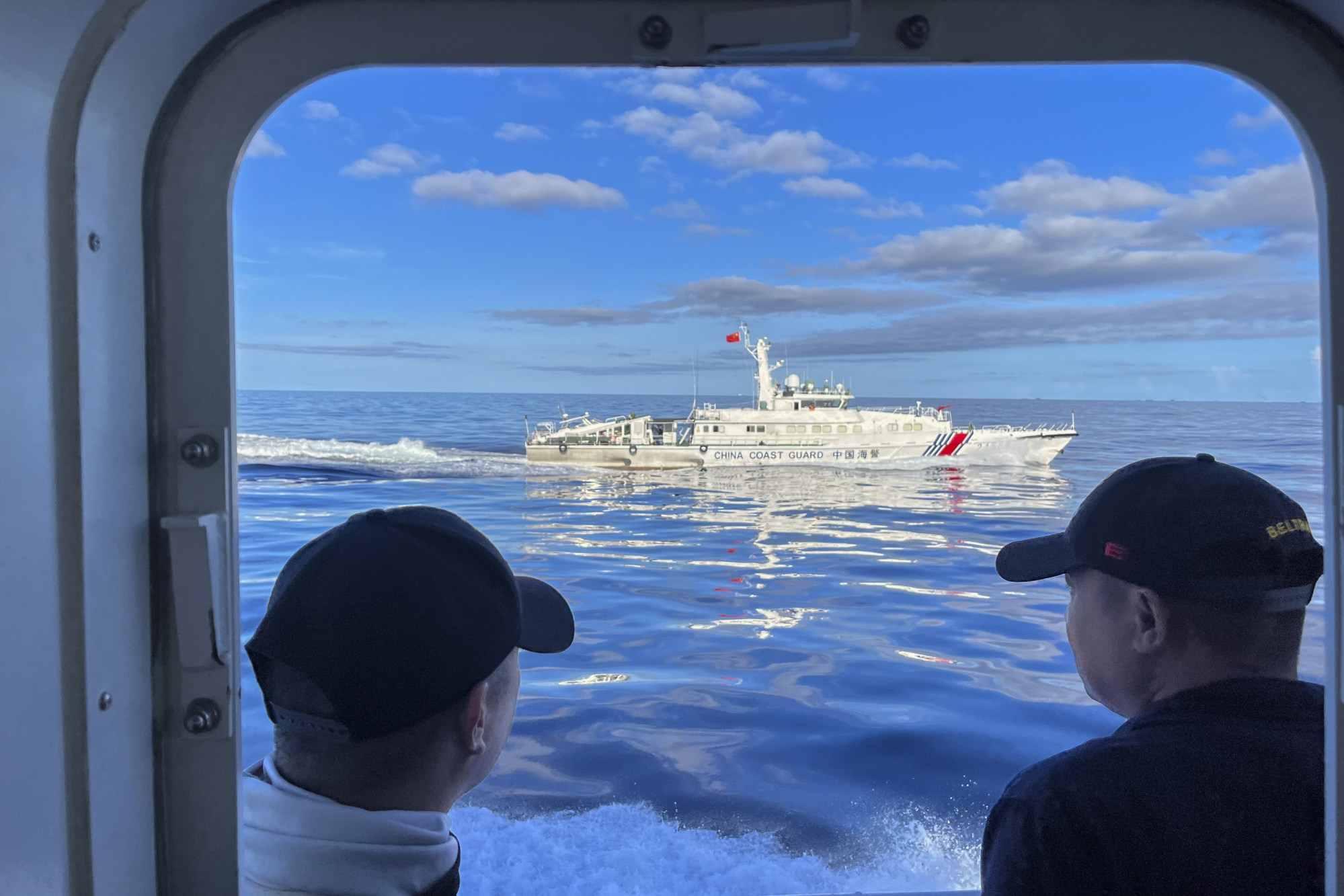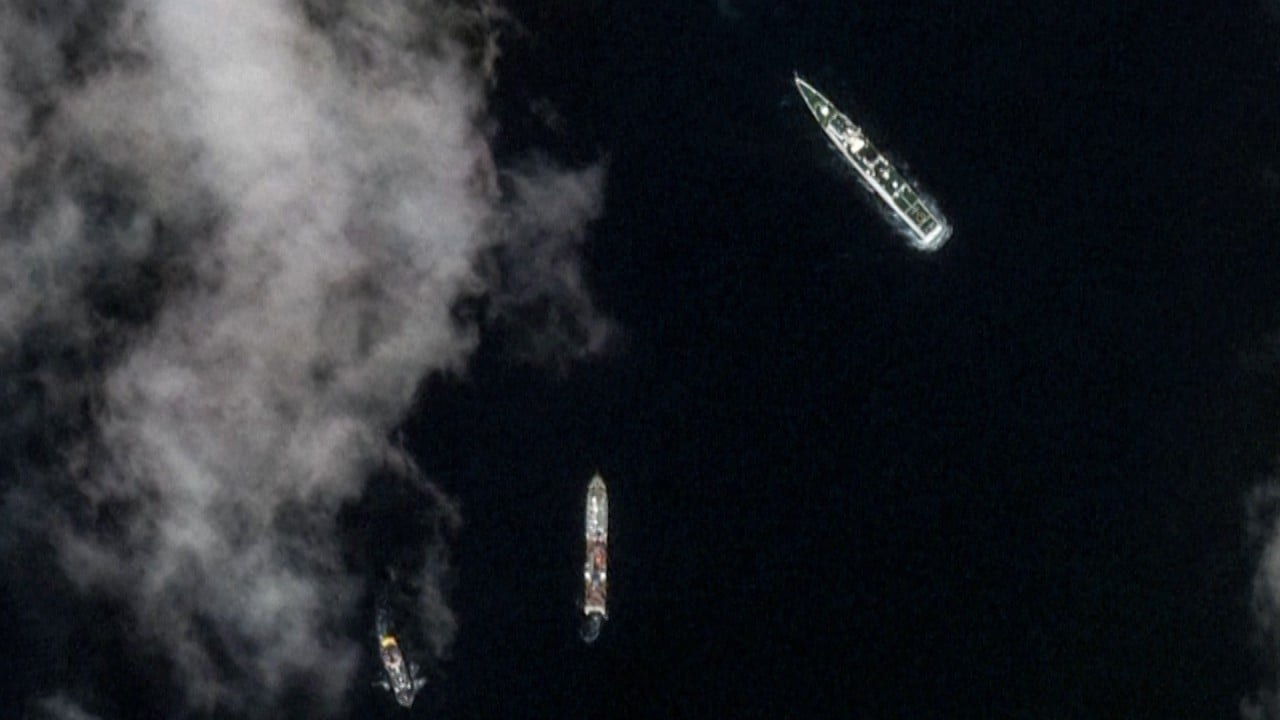
South China Sea: Philippines won’t let China remove military outpost on disputed shoal, ‘these are red lines’, says navy commander
- The comments from Navy Commodore Roy Trinidad come a day after four Filipino navy personnel were injured in a confrontation between Chinese and Philippine ships
- The Chinese coastguard said in its account of the incident that the Filipino vessel had rammed its ship
Philippine officials summoned a Chinese Embassy diplomat in Manila to convey a strong protest over the confrontation Tuesday off Second Thomas Shoal.
A small Filipino navy contingent has stood guard on a long-marooned warship that has served as an outpost in the shoal since the 1990s.

Philippine navy Commodore Roy Trinidad also said Filipino forces will not allow any structure to be erected in another hotly contested South China Sea area, Scarborough Shoal.
China surrounded the vast fishing atoll northwest of the Philippines with coastguard and suspected militia ships in 2012 after a tense stand-off between Chinese and Philippine ships.
“These are red lines for the Philippines, to the armed forces,” Trinidad said at a news conference in Manila when asked what Chinese actions would be unacceptable to the Philippines in the disputed waters.
The latest flare-up in the long-simmering disputes began when Chinese coastguard and suspected militia ships shadowed, surrounded and blocked two Philippine coastguard ships which were escorting two civilian motorboats manned by Filipino navy personnel.
They were on the way to deliver supplies and replacement navy and marine personnel to the BRP Sierra Madre, a navy warship that was deliberately grounded by the Philippine military in the late 1990s in the shallows of Second Thomas Shoal to serve as a territorial outpost.
China also claims the area and has surrounded the shoal with coastguard, navy and suspected militia ships to prevent Filipino forces from delivering construction materials to reinforce the Sierra Madre, which is encrusted with rust and slightly tilting but remains an actively commissioned navy ship, meaning any attack on it would be considered by Manila as an act of war.
After dawn on Tuesday, a Chinese coastguard vessel sideswiped one of the Philippine coastguard ships, the BRP Sindangan, where crewmen scrambled to lower rubber fenders along the side to avoid damage to the hull.
South China Sea code: Philippines’ U-turn a sign tensions still hinder progress
Inviting journalists to join trips by Philippine ships to the area is part of a strategy adopted last year by the government to publicise China’s aggressive actions in one of the world’s most hotly contested waterways. China has reacted by providing its coastguard personnel with video cameras to contest Manila’s version of the confrontations.
The Chinese coastguard said in its account of the incident that the BRP Sindangan had rammed its ship, although the journalists aboard the Philippine coastguard vessel saw the Chinese ship approach dangerously close before the collision.
Later, another Chinese coastguard ship blocked and then collided with a supply boat being escorted by the Philippine coastguard, Filipino officials said.
The supply boat was later hit by water cannon blasts from two Chinese coastguard ships. Philippine navy vice-admiral Alberto Carlos was aboard the boat and witnessed the water cannon assault, which he said caused minor injuries to four navy personnel.

“The pressure was really intense,” Carlos said. “It shattered the windshield of the boat and caused some injuries.”
The damaged boat immediately returned to the western Philippine province of Palawan. The other supply boat managed to evade the Chinese coastguard blockade and delivered supplies to the Filipino forces guarding the shoal, Philippine officials said.
The two-decade-long territorial stand-off sparked a series of confrontations between Chinese and Filipino forces last year, with the Philippines protesting dangerous manoeuvres by Chinese coastguard vessels and China demanding that the Sierra Madre be towed away by the Philippines.
The Chinese coastguard said in a statement that “it took control measures in accordance with the law against Philippine ships that illegally intruded into the waters adjacent to Ren’ai Reef,” the name Beijing uses for Second Thomas Shoal.
French ‘Spider-Man’ scales GT tower to support Philippines’ South China Sea claims
In Washington, US State Department spokesman Matthew Miller said the incidents showed China’s “reckless disregard for the safety of Filipinos and also for international law,” and that China was interfering with “lawful Philippine maritime operations”.
The confrontations have sparked fears of a larger conflict that could involve the United States.
Chinese and Philippine officials met in Shanghai in January and agreed to take steps to lower tensions, but the recent confrontations underscore the difficulty of doing so.
“If China desires some improvement or progress in resolving these maritime disputes in a peaceful and orderly manner, we demand that they match their words with their actions,” Jonathan Malaya, assistant director general of the National Security Council, said on Wednesday at a news conference in Manila.


